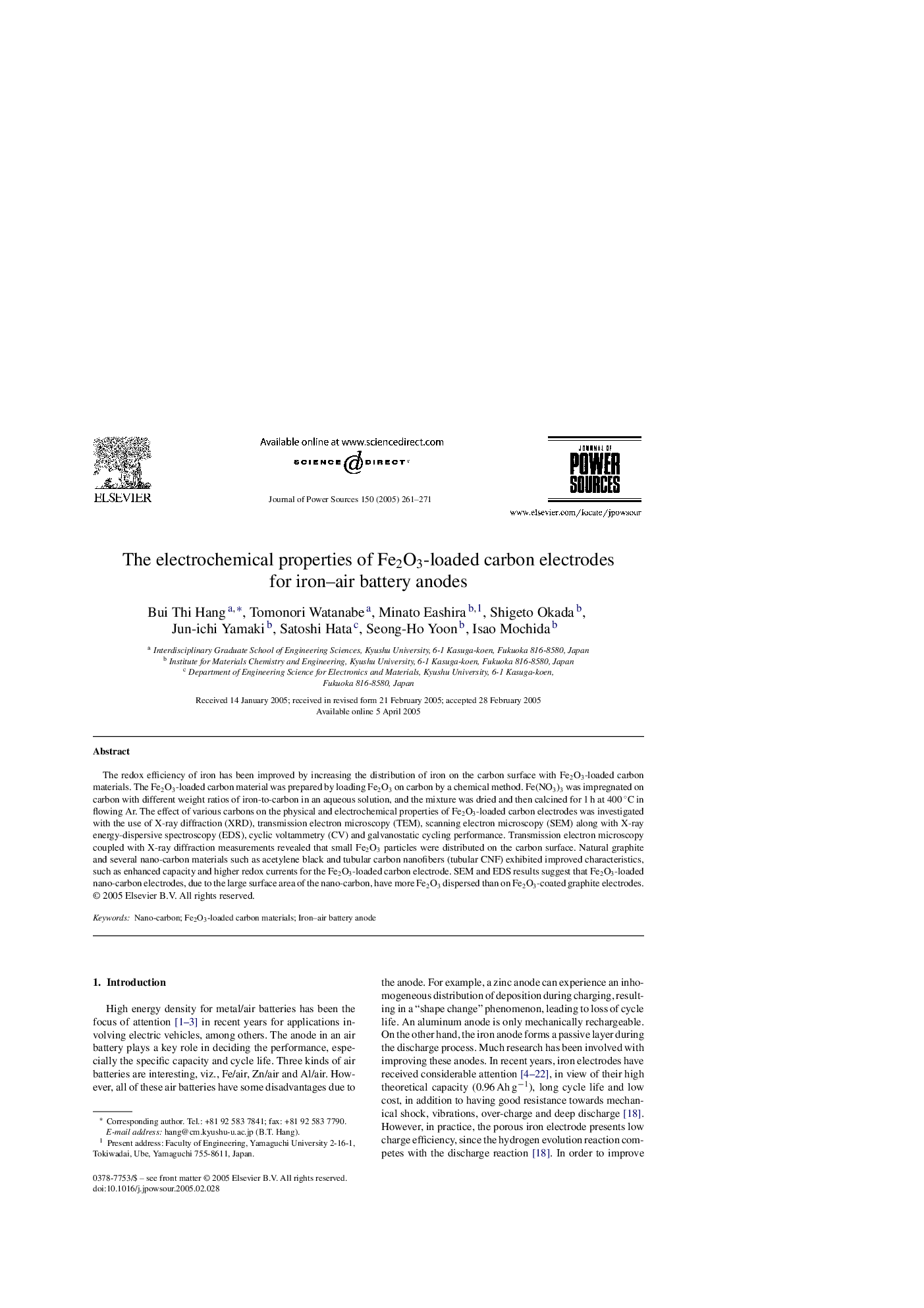| Article ID | Journal | Published Year | Pages | File Type |
|---|---|---|---|---|
| 9760192 | Journal of Power Sources | 2005 | 11 Pages |
Abstract
The redox efficiency of iron has been improved by increasing the distribution of iron on the carbon surface with Fe2O3-loaded carbon materials. The Fe2O3-loaded carbon material was prepared by loading Fe2O3 on carbon by a chemical method. Fe(NO3)3 was impregnated on carbon with different weight ratios of iron-to-carbon in an aqueous solution, and the mixture was dried and then calcined for 1 h at 400 °C in flowing Ar. The effect of various carbons on the physical and electrochemical properties of Fe2O3-loaded carbon electrodes was investigated with the use of X-ray diffraction (XRD), transmission electron microscopy (TEM), scanning electron microscopy (SEM) along with X-ray energy-dispersive spectroscopy (EDS), cyclic voltammetry (CV) and galvanostatic cycling performance. Transmission electron microscopy coupled with X-ray diffraction measurements revealed that small Fe2O3 particles were distributed on the carbon surface. Natural graphite and several nano-carbon materials such as acetylene black and tubular carbon nanofibers (tubular CNF) exhibited improved characteristics, such as enhanced capacity and higher redox currents for the Fe2O3-loaded carbon electrode. SEM and EDS results suggest that Fe2O3-loaded nano-carbon electrodes, due to the large surface area of the nano-carbon, have more Fe2O3 dispersed than on Fe2O3-coated graphite electrodes.
Keywords
Related Topics
Physical Sciences and Engineering
Chemistry
Electrochemistry
Authors
Bui Thi Hang, Tomonori Watanabe, Minato Eashira, Shigeto Okada, Jun-ichi Yamaki, Satoshi Hata, Seong-Ho Yoon, Isao Mochida,
